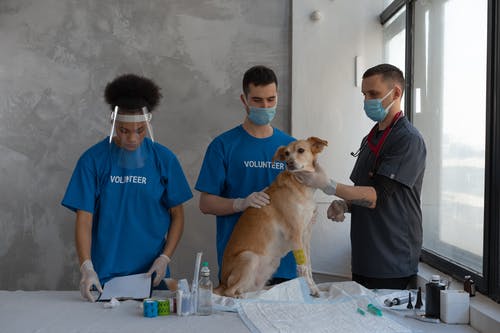When it concerns vaccinating pets, the advantages always outweigh the risks. Dogs might experience side effects from vaccines, similar to several medical treatments. If you’re a dog owner, you’ve probably experienced the anxiousness and worry that comes with stressing over your dog reacting to a vaccine.
Typical Dog Reactions to Vaccines
Vaccinating your dog when they are still a puppy will give them the best possible start in life. You must also keep your dog’s immunity to potentially fatal infections by providing regular vaccination boosters. Vaccinations, like any medical procedure, could have an unpleasant response in some people.
Vaccine responses in dogs are occasional, and they tend to be modest and short-lived when they do happen. A dog’s vaccination experience can be more pleasant for you and your pet if you learn to recognize the indicators of an adverse response.
Lethargy
Lethargy and discomfort, occasionally accompanied by a mild fever, are the most typical symptoms of dog vaccines. When a dog receives a vaccination, its immune system responds locally and systematically. The objective of vaccination is to provoke an immunological response.
Many pets go back to normal within a day or two of immunization. If your dog’s pain or fatigue persists or worsens, it’s time to visit the vet. Your veterinarian might suggest painkillers or antibiotics help your dog recover. By visiting a reliable vet, you will learn more about immunization and veterinary care that will help you in the long run.
Having Difficulty Walking
After your puppy obtains immunizations, there could be pain and swelling at the injection site. Because of this, you can witness some cases of limping or perhaps paralysis. Most typically seen in dogs who have received a Rabies vaccination, rear (posterior) end paralysis makes the dog’s hind or back legs ineffective.
If your dog is experiencing problems walking after getting a cat and dog vaccination, watch out for paralysis or limping signs and consult your veterinarian for guidance; despite appearances to the contrary, the paralysis is short-term and must start to improve around the tenth day.
Swelling
Dogs regularly experience undesirable impacts such as lumps and bumps. A small, solid bump might periodically develop at the puncture site after using a needle. This is a natural response, but pet owners should keep an eye on the area in case the lump becomes much more prominent, such as inflammation, leaking, or infection.
The swelling should not hurt and should go away within a week. Call a veterinarian if the lump displays indicators of infection or continues after a week. While vaccinating your pet is vital, their oral health is paramount. Ensure to visit vets that provide pet dental care to keep your pet’s teeth healthy.
Sneezing and Sniffling
While most vaccines need to be injected into your dog, others can be offered as drops or a spray into its nostrils. The most prominent intranasal vaccines target both Bordetella bronchiectasis and parainfluenza virus for dogs. It must come as no surprise, however, because respiratory-system-related unfavorable effects are likewise conceivable.
After getting an intranasal vaccine, a dog’s nose might become congested or drippy for a few days. Dogs generally recover from their immunization responses within a day or two. If it does not work, you need to seek the advice of a veterinarian.
Bottomline
Vaccine-related adverse events in dogs are pretty uncommon but can be life-threatening. Consult a vet for guidance on managing future vaccines if your dog experiences a vaccine response. While vaccinating your dog is necessary for its health, its security should come first. Consult a veterinarian to give your dog the best treatment.





